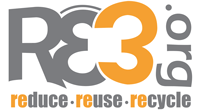 Guest blogger – Keep America Beautiful of New Hanover County
Guest blogger – Keep America Beautiful of New Hanover CountyKeep America Beautiful has announced the results of the largest litter study ever conducted in the U.S. The study identifies and dissects the causes, effects and costs of litter in America, and is the first major national survey of litter in the U.S. in 40 years.
Behavioral studies observed nearly 10,000 individuals in 130 locations in 10 states. Quantitative surveys measured roadway litter in GIS-selected samplings of 45 metropolitan areas nationwide, as well as 180 non-roadway sample locations.
KEY FINDINGS:
In the past 40 years, the amount of litter in America has decreased by 61 percent nationwide, a change attributed to aggressive, long-term public education and cleanup programs. Yet litter remains a costly and often underestimated problem for the environment and quality of life.
Litter conservatively costs our nation $11.5 billion per year. These are direct costs, including cleanup and prevention programs, and are carried largely by businesses and taxpayers. Not included in this figure are significant indirect costs:
1. Decreased property values. Ninety-three percent of homeowners, 55 percent of real estate agents and 90 percent of property appraisers surveyed stated that a littered neighborhood would decrease their assessment of a home’s value.
2. "Opportunity Costs” such as decreased commerce and tourism in blighted areas.
3. Health effects and related costs of littered environments.
People matter. Most littering observed in the study – 81 percent-- was committed “with intent” by the individual, and was mainly attributable to lack of individual awareness or sense of obligation. The study showed that 17 percent of all observed disposals were classified as “improper” or littering.
Context matters. Fifteen percent of all littering can be attributed to context. The strongest contextual contributor to littering is the prevalence of existing litter. Other contextual variables affecting litter are the number of trash or ash receptacles present, and the distance between receptacles.
Age matters. Older individuals (30 and older) littered less than younger individuals, but gender was surprisingly not related to litter rates.
RECOMMENDATIONS:
Education and cleanups work. Clearly, intense education and cleanup efforts have been the primary contributors to the significant decrease in litter during the past 40 years.
More receptacles work. Distance to receptacles is a strong predictor of littering behavior. More recycling infrastructure is needed. Only 12 percent of public spaces surveyed had recycling receptacles.
Funding is needed. Corporations, foundations and government should all be taking the lead in funding /sponsoring education programs, volunteer programs and infrastructure. As with most societal issues, prevention is far less costly than remediation.
For more information, visit: www.kab.org

3 comments:
I wish there were more recycling recepticles at each "garbage can" If they were there chances are people would use them. It's like the saying "if you build it they will come". Thanks for the great post !!\
Peace,
Rich @ NY Homesteader
Thanks so much for your comment.The barrier to placing a recycling bin next to each trash can is cost. The capital cost and the collection cost. However, the avoided disposal cost can sometimes overcome these issues.
Alena,
Thanks for your kind words. I'm glad you enjoy the blog. If there's any information you're looking for that you don't see, let me know and I'll work to accommodate.
Kelley
Post a Comment